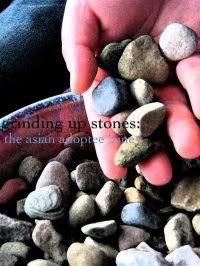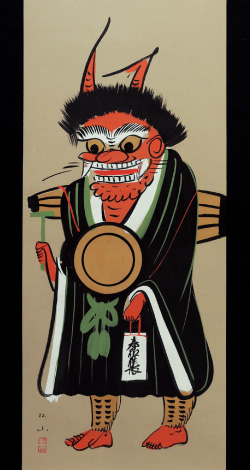Its ambition was to serve as a way to inspire and educate young adoptees, but the editor also saw it as a resource for all adoptees. They were also in college at the time, but it was an ambitious project. Perhaps it might revive itself one day, as journals have a habit of doing.
Grinding Up Stones took its name from a lyric from a Blue Scholars song entitled “No Rest for the Weary”. According to the editor, "This is relevant to the experiences of transracial adoptees in that there is a great fiction we are taught as adoptees about where we came from, who we are, how we feel and what we can become. As transracial adoptees, we must grind these stones “until they turn into dust” in order to develop our own consciousness and write our own story."

I had two poems that were printed in the first issue, "Selves" and "Voyage." They have not appeared in any of my main collections since. There were elements to these poems that were very particular to the transcultural adoptee experience. One was written around the mid-90s, while "Voyage" was first written around 2002.
It took a while for the hard copy of the journal to arrive, which also featured the work of Sumeia Williams, among others. Thinking on it 2 years later, the journal was a modest affair, but put together thoughtfully. It's hard to say how many copies have still survived, or since been pulped or lost to the ashbins of history.
"Selves" was more of a verbal puzzle, while "Voyage" had been written following a study of Bodhidharma and a Minneapolis Institute for the Arts exhibit of Japanese art, particularly zen-inspired art and a selection of ukiyo-e paintings."Voyage" was particularly concerned with the Otsu-e tradition among the villagers of Otsu.

During that period of number of poems of mine had been written such as "Oni No Nenbutsu," about a Japanese ogre who was a popular subject of woodblock prints, shown wearing a monk's robes and praying the Buddhist nenbutsu prayer.

The ukiyo-e technique stayed with me for a number of reasons, and featured in many of my poems including "Japonisme, Laoisme," which appeared in the Asian Pacific American Journal. They taught me something of art: Originally, the ukiyo-e woodblock prints arrived in the West as disposable, cheap packing paper to protect Japanese pottery being shipped to Europe.
The ukiyo-e often depicted landscapes or scenes from 'the floating world' of prostitutes, gamblers and the rest of the seemingly sordid Japanese underclass of the time. These woodblock prints weren't taken seriously as art by the Japanese and sent away to another country as little more than rubbish.
Ironically, these prints were found by European painters and artists and became more sought after and influential than the goods the prints were originally supposed to protect. The ukiyo-e lead to the Japonisme art movement and influenced figues such as Baudelaire, Toulouse Lautrec, Monet, Van Gogh, Renoir, Degas, and Frank Lloyd Wright.
What did all of that have to do with transcultural adoptees as I sent Grinding Up Stones those poems? You tell me. I'm just a poet.
No comments:
Post a Comment